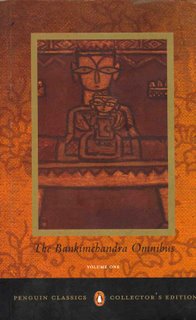 This is a visual tribute to my demised pup, Julie, by a close friend of mine, Sajeev Madhavan, who is based in Kuwait now and is a talented graphic artist. Sajeev was very fond of her when he spent time as my neighbour in Belapur, Mumbai, India, before he boarded a flight to Kuwait in search of a brighter future. I upload this image in memory of those good old days when all three of us were a happy lot.
This is a visual tribute to my demised pup, Julie, by a close friend of mine, Sajeev Madhavan, who is based in Kuwait now and is a talented graphic artist. Sajeev was very fond of her when he spent time as my neighbour in Belapur, Mumbai, India, before he boarded a flight to Kuwait in search of a brighter future. I upload this image in memory of those good old days when all three of us were a happy lot.
Thursday, April 06, 2006
A tribute to Julie darling
 This is a visual tribute to my demised pup, Julie, by a close friend of mine, Sajeev Madhavan, who is based in Kuwait now and is a talented graphic artist. Sajeev was very fond of her when he spent time as my neighbour in Belapur, Mumbai, India, before he boarded a flight to Kuwait in search of a brighter future. I upload this image in memory of those good old days when all three of us were a happy lot.
This is a visual tribute to my demised pup, Julie, by a close friend of mine, Sajeev Madhavan, who is based in Kuwait now and is a talented graphic artist. Sajeev was very fond of her when he spent time as my neighbour in Belapur, Mumbai, India, before he boarded a flight to Kuwait in search of a brighter future. I upload this image in memory of those good old days when all three of us were a happy lot.
Monday, April 03, 2006
Classic smorgasbord


These translations of Bankimchandra’s works into English are a meticulous effort that allows more readers to enjoy the master storyteller at his best
The Bankimchandra Omnibus (volume 1)
Bankimchandra Chattopadhyay
Penguin Books, 2005, pp 535, Rs 495
The life of Bankimchandra Chattopadhyay, one of the most influential Indians during the nineteenth century British colonial rule, is as legendary as the works he meticulously and prolifically penned. Born in Kantalpara, West Bengal, in 1838, he became the first Indian to earn a BA degree. He also served in the Indian Civil Service as deputy magistrate and deputy collector. Chattopadhyay is, nevertheless, known for his path-breaking novel, Anandamath (1882); the verse ‘Vande Mataram’ from the book turned out to be the anthem of the nationalists during the Freedom Movement and today it is the National Song of India. It is another matter though, that there is a school of thought which thinks that Chattopadhyay was a Hindu nationalist rather than a secular freedom fighter.
But nothing will diminish the image of a master storyteller who has left behind a huge and varied array of literature for centuries to savour. And now, thanks to meticulous translators like Radha Chakravarty, Marian Maddern, S N Mukherjee and Sreejata Guha, we can savour the first volume of the Bankimchandra Omnibus, a veritable feat. Space doesn’t permit delving deep into each and every novel (Kapalkundala, The Poison Tree, Indira, Krishnakanta’s Will, Rajani) that has been featured in this volume.
But a brief overview of the stories — Chattopadhyay’s best-known five works in English translation — would suffice. Kapalkundala narrates the story of Nabakumar, a young damsel called Kapalkundala whom he rescues from a tantric intent on human sacrifice and the beautiful Lutfunnisa who is bent on marrying Nabakumar. The narration of the story, set in the Bengal of Emperor Jehangir’s time, is a bit odd in English as it is a verbatim translation of 19th century Bengali (The same may not be true with stories by other translators). The translator’s intent is undisputable — to preserve the originality — but it could have been easier for the contemporary reader if the archival tone had been toned down.
Light-hearted tale
If The Poison Tree, set in Chattopadhyay’s time, narrates the heartrending story of Nagendra, who is torn between his devoted wife Suryamukhi and the bewitching young widow Kundanandini, Indira is a light-hearted tale of playful intrigues. Krishnakanta’s Will is the most powerful and well-translated story in the collection. It is about a tragedy of lust, infidelity, greed and death that revolves around Govindlal, his wife Bhramar, the attractive widow Rohini and a stolen will. And finally an Indian story that is told in first person — Rajani. It is about a blind girl and two men and has strong psychological undercurrents.
As is evident, Chattopadhyay’s novels (his first novel, Rajmohan’s Wife, was written in English) were too modern in that it talked about the then social taboos in lucid detail. Another contribution he made is that he merged the formal, Sanskiritised Bengali with the colloquial idioms of the spoken language to write prose narratives that even a layman could relish. And he is a master of all forms, be it historical romances, the then social conditions or that of nationalistic ethos.
— Sunil K Poolani / Deccan Herald
Subscribe to:
Posts (Atom)